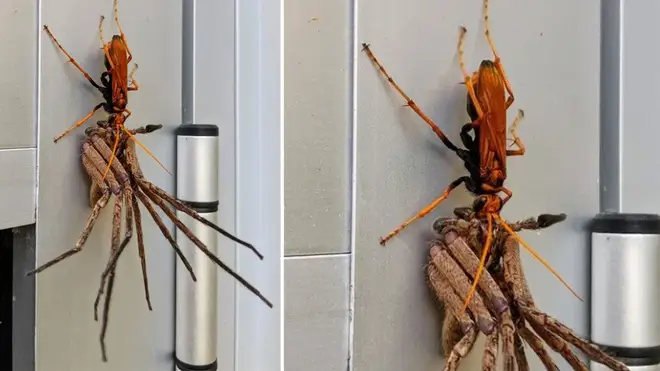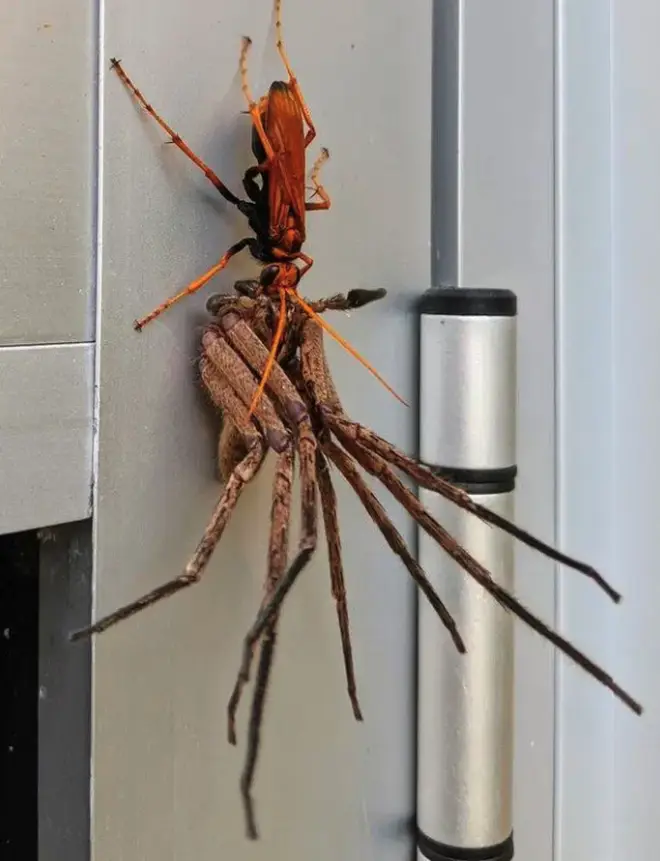Terrifying moment a 'tarantula hawk wasp' carries off huntsman spider twice its size
20 December 2019, 10:00

A terrifying photo which sees a wasp being carried away by a giant spider, has gone viral.
If you have a crippling fear of creepy crawlies, it’s probably a good idea to look away now.
A terrifying scene involving a 'tarantula hawk wasp' capturing a giant spider is now circulating online.
The photo sees the orange-black wasp paralysing the eight-legged creature, before dragging it up a wall in between it’s jaws.
A homeowner in Bronte, Sydney shared the image on Reddit, writing: "Got home from work to find this Tarantula Hawk wasp carting off a huntsman spider."

Unsurprisingly, the photo has since racked up thousands of comments, with one person writing: “I had a desire to visit Australia. I no longer have that desire. Thanks for saving me some money.”
Read More: Woman reveals ‘genius’ hack that keeps your vacuum cleaner smelling fresh for just £2
“Oh, HELL to the no.....”, said another, while a third added: “That’s it - I’m officially never going. Nope.”
And a fourth joked: “Best part about this post? We all knew it was Australia without reading the description.”
Read More: Lego children's magazine slammed as 'sexist' for implying girls can't be scientists
The tarantula hawk wasp is said to have the most painful sting in the world, and is known to immobilise its prey by stinging their undersides, before taking it to its nest.
It’s scientifically known as 'Cryptocheilus bicolor' and is native to Australia, while experts advise people not to touch or provoke it.
This comes after a dangerous new species of spider was discovered earlier this month which has venom so potent, that it can actually rot human flesh with a single bite.
Named the Loxosceles tenochtitlan, the spider can cause lesions of dead flesh up to 14 inches (40cm) wide.
While the bite is not fatal, it will leave a permanent scar and can take up to seven months to heal.
When they attack children, the bite can even be more dangerous as it can get into the blood stream and destroy red blood cells, but this is very rare.
Luckily for Brits, it doesn’t seem to have made its way to the UK and was spotted in central Mexico in the city of Tlaxcala.






























